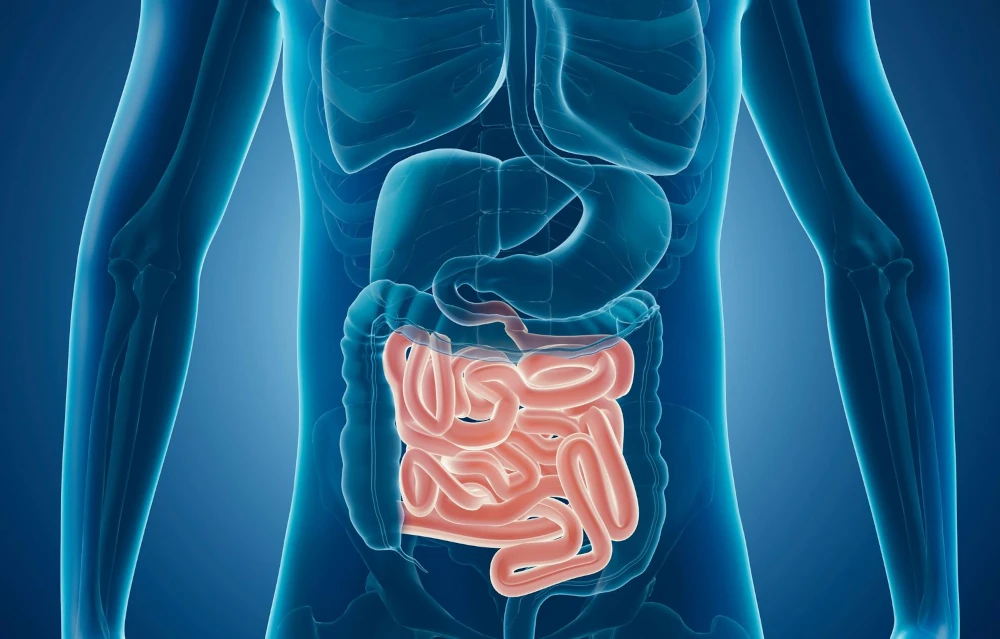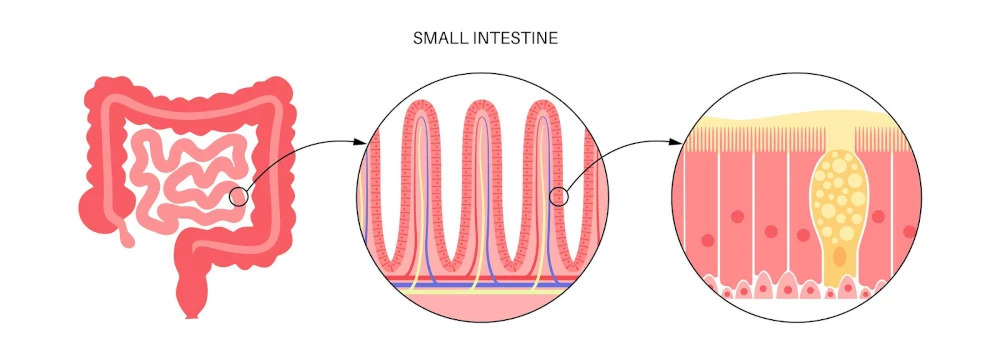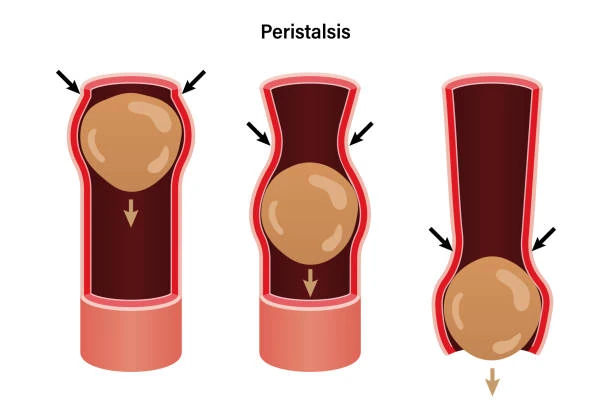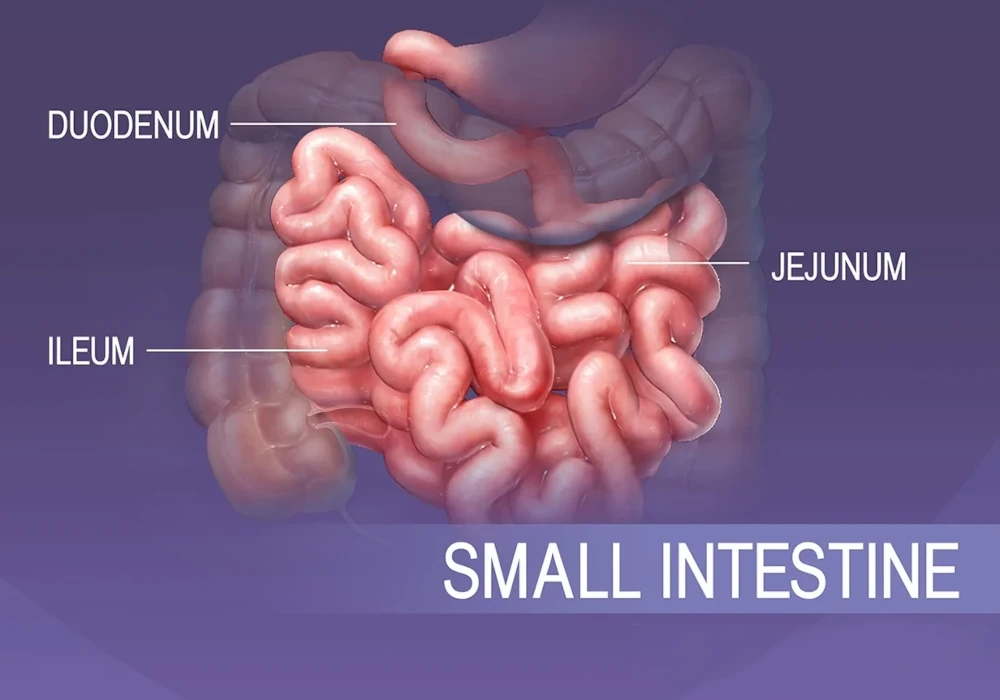How is Small Intestine Designed to Absorb Digested Food

Let’s be real—most people don’t sit around thinking about what their small intestine is doing. But if you’ve ever wondered how your body actually pulls nutrients from what you eat, that’s where this long, twisty part of your gut comes in.
And it’s not just doing a decent job—it’s kind of a genius system. Everything about it, from its shape to its lining, is built to grab every useful thing from your food before it moves along. It’s the kind of efficiency we wish we all had.
What Is the Small Intestine and Why Is It So Important?
Just imagine a tube that’s 20 feet long but skinny as your thumb, packed inside your belly.
That’s your small intestine.
Its main gig?
- Break down digested food
- Soak up all the good stuff—vitamins, minerals, proteins, sugars
- Send those nutrients off to places in your body that need them
Without it, even a perfect diet would be pointless. You eat, sure, but nothing gets in. That’s why it matters.
Massive Surface Area: More Space, More Absorption
Here’s where things get smart.
The small intestine isn’t flat inside. It’s folded like a crumpled-up towel, then covered with tiny finger-like bumps called villi. And each of those is covered in even smaller ones—microvilli.
Basically:
- More folds = more surface
- More surface = more places to grab nutrients
- More nutrients = more energy, strength, health
Tip: When people with celiac disease lose their villi, they get tired and weak even if they eat well, because their body can’t absorb things properly.
It’s all about the surface area, and this design nails it.
Villi and Microvilli: Built for Maximum Efficiency
These little villi? They’re not just sitting around.
- Inside each one, there are tiny blood vessels
- There’s also a lacteal, which grabs fat
And everything gets absorbed super fast because the walls are thin—just one layer of cells.
For example after having a big meal of rice and chicken, those carbs and proteins go straight through the villi and head to the bloodstream. It usually feels full but light, and that’s efficient absorption at work.
It’s like a high-speed loading dock.

Specialized Absorption Mechanisms for Different Nutrients
Your body doesn’t treat all nutrients the same. Some take more effort.
Here’s how it goes:
- Active transport: Uses energy. Needed for things like glucose and amino acids.
- Facilitated diffusion: Easier route—needs a “helper” but no energy.
- Simple diffusion: The easiest. Fats do this—just slide in.
Tip: If you’re dehydrated or run down, your active transport slows down too. Drink water—it literally helps you absorb food.
It’s kind of like different passengers needing different doors to get onto the same train.
Rich Blood Supply and Lymphatic System Support Nutrient Delivery
Once nutrients are inside the villi, where do they go?
- Capillaries carry sugars and proteins straight into your blood
- Lacteals pick up fats and carry them through the lymph system
That means everything gets where it needs to be—your muscles, brain, liver—quickly.
Example: I once had a super oily meal and felt heavy for hours. That’s because fats go through a slower system—the lymph—before they reach your blood.
It’s not just what you absorb, it’s how fast your body can move it out.
Peristalsis: Gentle Movement that Aids Absorption
Your small intestine has its own kind of rhythm.
It squeezes in slow waves—that’s called peristalsis—to push food along.
- Not too fast (or nothing gets absorbed)
- Not too slow (or it backs up)
Tip: Ever get a sudden stomach cramp when you’re nervous? That’s peristalsis getting thrown off by stress.
The small intestine isn’t just a tube. It’s a moving machine.

Enzymes at the Brush Border Complete the Process
Just before food gets absorbed, it hits one final step.
That’s the brush border, where enzymes live on the microvilli.
These tiny helpers break food into even smaller pieces:
- Lactase breaks down milk sugar
- Peptidase breaks down proteins
- Maltase handles starches
Tip: If your stomach gets uncomfortable with dairy, you might have an unduly low amount of lactase. And that is why lactose intolerance is rather widespread.
Things are getting broken down right as they pass into the blood. One last step—but a vital one.
Each Part of the Small Intestine Has a Job

It’s not one long boring tube. Each section has its own job:
- Duodenum: The first segment involves breaking down and absorbing the minerals
- Jejunum: The main absorber-completing most of the sugar, protein, and vitamin absorption
- Ileum: The last stretch of the road, where the leftovers like B12 and bile salts are being dealt with.
Example: My cousin had part of her ileum removed. She has to take B12 forever now because that’s where it’s normally absorbed.
Each inch matters more than you’d think.
What Happens if Absorption Fails?
If the system breaks down, things get rough fast.
You might have:
- Constant fatigue
- Diarrhea
- Weight loss
- Vitamin deficiencies
- Hair thinning, brittle nails
Why? Because you’re eating but not absorbing.
Conditions that cause this:
- Celiac disease
- Crohn’s
- Surgical removal of sections
Tip: If you feel off despite eating well, ask your doctor for a blood test. Low iron or B12 might mean your small intestine needs help.
Final Thoughts: Why the Small Intestine’s Design Matters
You might not see it, but your small intestine is working overtime every single day.
- It’s long, folded, and packed with absorbing surfaces
- It knows how to handle each nutrient differently
- It moves food slowly and absorbs things quickly
- It has systems to break down, sort, and ship nutrients all at once
Personal note: Once I understood this, I started noticing how I felt after meals. If I felt sluggish, I knew something didn’t absorb right. Now I eat slower, chew more, and drink more water—and my gut thanks me.
So yeah, it may not be glamorous, but it’s brilliant. And it’s doing its job right now—probably while you’re reading this.
FAQs
What does the small intestine actually do during digestion?
The small intestine’s job is to extract the nourishing essentials from food, these nutrients are vitamins, proteins and sugars, and pass it through the bloodstream for the body’s requirements.
Why is the small intestine shaped the way it is?
It’s long and covered in tiny finger-like things to grab as much nutrition as possible while food moves through it.
What messes up nutrient absorption?
As for an intestine lining damaged by celiac or inflammation, it doesn’t absorb what the body requires hence you feel lethargy and weakness.
